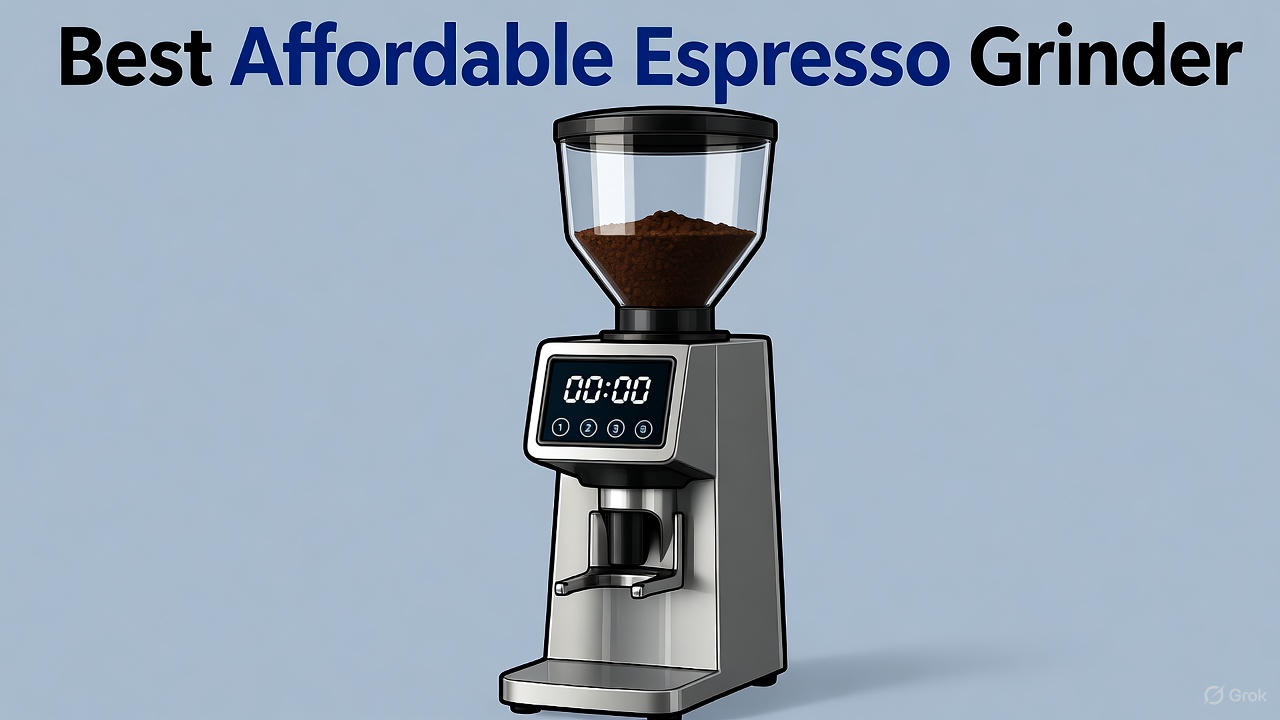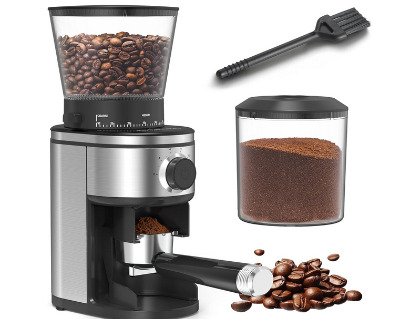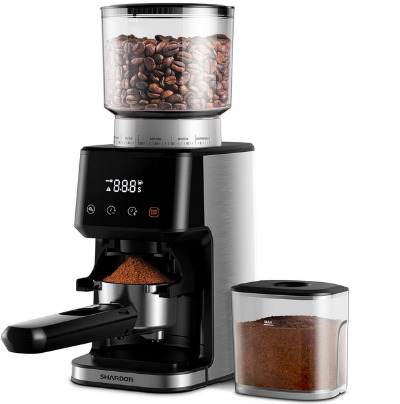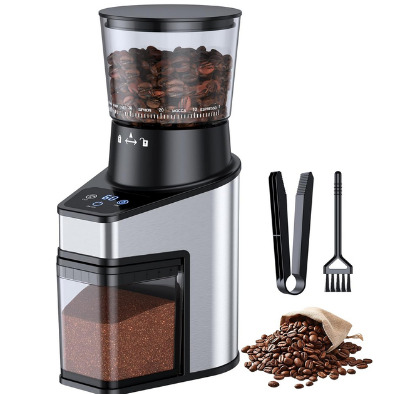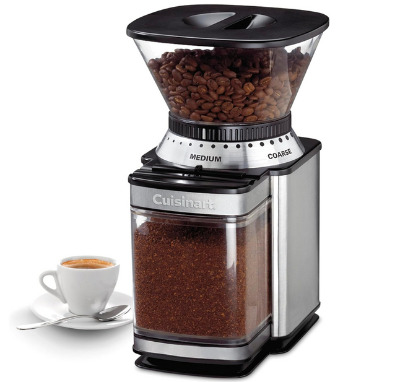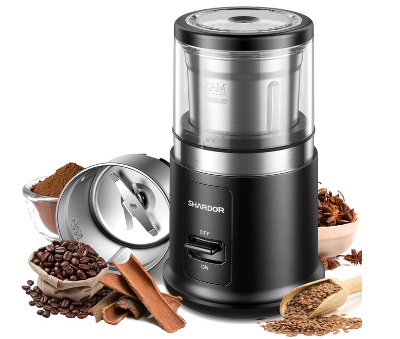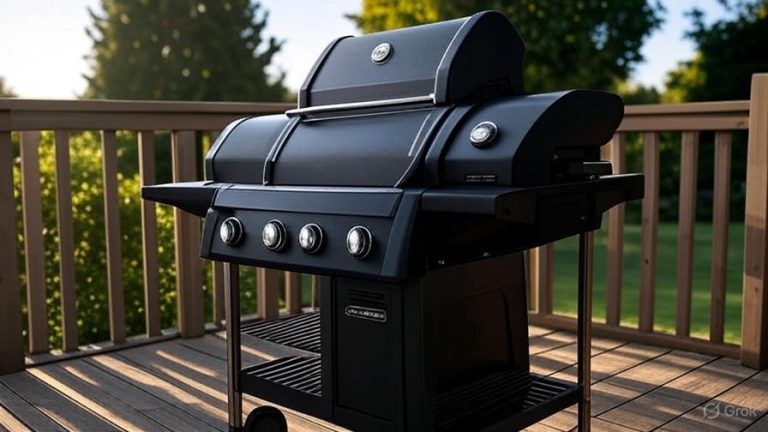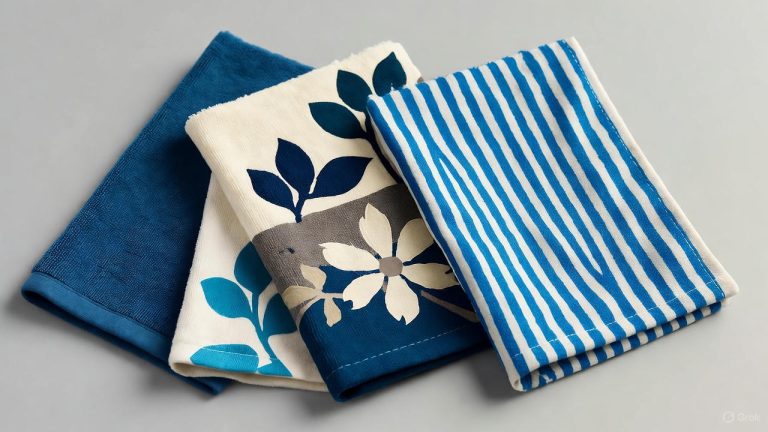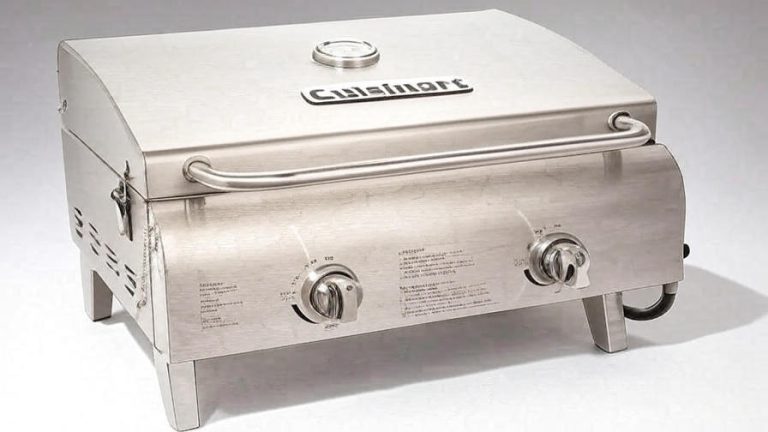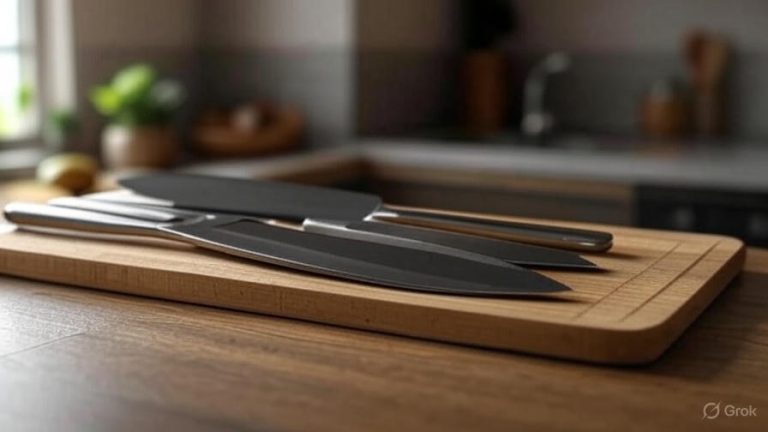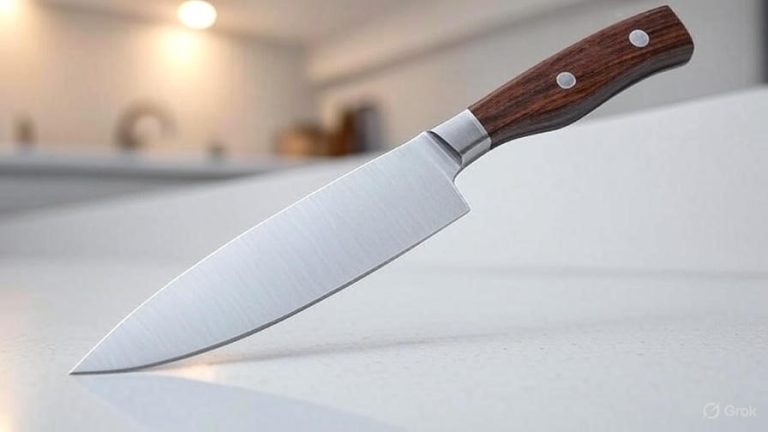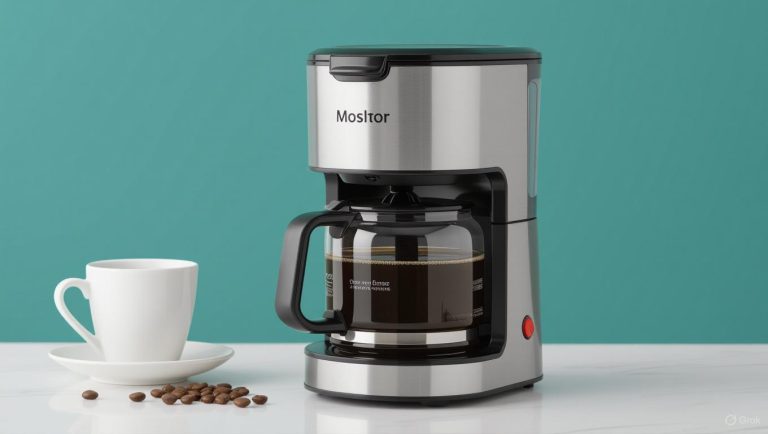5 Best Affordable Espresso Grinder In 2025
The quest for the perfect espresso starts long before water touches coffee grounds. It begins with how you grind your beans. Many coffee enthusiasts discover that their espresso quality suffers not from their brewing technique or bean selection, but from an inadequate grinder. The truth is simple: fresh grinding transforms your coffee experience from mediocre to exceptional.
Budget-conscious coffee lovers often face a dilemma. Premium burr grinders can cost hundreds of dollars, yet blade grinders produce inconsistent results that ruin even the finest beans. The good news is that affordable options now deliver professional-grade grinding without emptying your wallet. This comprehensive guide explores five exceptional grinders that prove you don’t need to spend a fortune to achieve barista-quality results at home.
Why Your Grinder Matters More Than You Think
Every coffee professional will tell you the same thing: invest in your grinder before upgrading your espresso machine. This advice stems from fundamental coffee science. When you grind beans, you expose the inner surfaces to oxygen, which immediately begins degrading the aromatic compounds that give coffee its complex flavors. Pre-ground coffee loses up to 60% of its aroma within 15 minutes of grinding.
Particle size consistency determines extraction quality. Uniform grounds extract at the same rate, producing balanced flavors. Inconsistent grinding creates a mixture of over-extracted and under-extracted particles, resulting in bitter, sour, or weak espresso. Blade grinders chop beans randomly, creating everything from powder to chunks in the same batch. Burr grinders crush beans between two abrasive surfaces, producing remarkably uniform particles.
The grind size adjustment capability matters for different brewing methods. Espresso demands fine grounds with consistent particle distribution, while French press requires coarse, even chunks. A versatile grinder adapts to whatever brewing method you prefer, making it a worthwhile investment for any coffee lover.
Understanding Burr Grinder Technology
Burr grinders employ two revolving abrasive surfaces to crush coffee beans into uniform particles. The gap between these surfaces determines the grind size. Two main types dominate the market: flat burr and conical burr grinders.
Conical burr grinders feature ring-shaped burrs with a cone fitting inside. Coffee beans feed through the top, gravity pulls them down, and the spinning cone crushes them against the outer ring. This design offers several advantages. The vertical orientation requires less motor power, keeping prices down while maintaining quality. Conical burrs also generate less heat during grinding, preserving delicate flavor compounds that high temperatures destroy.
Flat burr grinders position two parallel rings facing each other. Beans drop into the center and work their way outward as the burrs grind them. These grinders typically produce more uniform particles but cost more and require stronger motors. For home espresso preparation, conical burr grinders deliver excellent results at accessible prices.
The burr material affects longevity and grind quality. Ceramic burrs resist dulling and create less heat, but they’re brittle and can shatter if rocks or debris sneak into your beans. Steel burrs handle foreign objects better and typically last longer with proper care. Most affordable grinders use steel burrs, which work wonderfully for home use.
Key Features to Look For
Grind Size Settings
The number of grind settings determines your flexibility. Basic grinders offer 10-20 settings, while advanced models provide 40-60 options. More settings give you finer control over particle size, helping you dial in the perfect extraction for your specific beans and brewing method. Espresso preparation benefits from this precision, as small adjustments dramatically impact flavor.
Grind Consistency
Uniform particle size trumps nearly every other specification. The best affordable grinders produce grounds where 90% of particles fall within the same size range. This consistency ensures even extraction and balanced flavors. Look for grinders with precision burr alignment and solid construction that prevents wobbling during operation.
Grind Speed and Retention
Faster grinding seems appealing, but speed often sacrifices quality. Slow-spinning burrs generate less heat and produce more uniform particles. High-speed grinders can cook your beans through friction, introducing burnt flavors before you even brew.
Grind retention refers to how much coffee remains stuck in the grinder after each use. Some grinders trap several grams in their mechanisms, wasting coffee and mixing stale grounds with fresh beans. Low retention designs channel grounds directly into your portafilter or catch cup, ensuring maximum freshness.
Timer and Dosing Control
Built-in timers let you program consistent doses. Once you dial in your perfect grind time, the grinder automatically stops after the preset duration. This feature saves time and reduces waste. Some grinders offer cup-based dosing, adjusting the grind time based on how many cups you’re brewing.
Build Quality and Durability
Solid construction prevents the vibration that throws burrs out of alignment. Metal housings outlast plastic, though quality plastics work fine for home use. Check reviews for reports of motor failures, burr wear, or mechanical problems. A reliable grinder should last several seasons with regular maintenance.
Ease of Cleaning
Coffee oils accumulate on burrs, turning rancid and contaminating your fresh grinds. Regular cleaning preserves flavor quality and extends grinder life. Look for models with removable burrs and straightforward disassembly. Some grinders require tools for cleaning, while others come apart by hand.
Top 5 Affordable Espresso Grinders Reviewed
1. Coffee Grinder, Electric Conical Burr Grinder with 30 Grind Settings for 2-12 Cups
This versatile grinder serves coffee enthusiasts who want quality without complexity. The 30 grind settings cover everything from Turkish coffee to cold brew, giving you complete control over particle size. The conical burr mechanism crushes beans uniformly, producing the consistent grounds essential for proper espresso extraction.
The capacity accommodates 2-12 cups, making it practical for solo morning routines or entertaining guests. The hopper holds enough beans for multiple brewing sessions, reducing refill frequency. The removable components simplify cleaning, letting you maintain peak performance with minimal effort.
The grinder operates quietly compared to blade models, though it’s not silent. The motor provides steady power without overheating, even during extended grinding sessions. The burr alignment stays true over time, maintaining grind consistency as you use it regularly.
One standout feature is the straightforward operation. You select your grind size, press the button, and watch as uniform grounds collect in the catch container. No complicated programming or confusing displays—just reliable grinding that gets you closer to café-quality espresso.
The build quality strikes a balance between affordability and durability. The housing won’t win design awards, but it’s sturdy enough to handle daily use. The burrs maintain their sharpness through thousands of grinding cycles, though they’ll eventually need replacement after extensive use.
This grinder excels at espresso preparation while remaining versatile enough for other brewing methods. The fine settings produce the powder-like consistency espresso demands, while coarser settings work well for drip coffee or pour-over. The grind consistency rivals grinders costing twice as much.
Temperature management deserves mention. The motor and burrs stay cool during normal operation, preventing the heat damage that destroys delicate flavor compounds. Your beans taste as fresh as they smell, with no burnt notes from excessive friction.
The catch container could be larger for those who batch-grind, but it’s adequate for typical home use. Static cling sometimes causes grounds to stick to the container walls, though this affects most grinders in this price range. A quick tap usually dislodges the stubborn particles.
Best for: Home baristas seeking reliable performance and grind versatility without breaking the bank.
2. SHARDOR Conical Burr Espresso Coffee Grinder Electric with Precision Timer 2.0
The SHARDOR grinder brings touchscreen technology to affordable coffee grinding. The digital interface displays your selected settings clearly, and the precision timer ensures consistent dosing every time. The 51 grind settings provide exceptional control over particle size, letting you fine-tune your espresso extraction with scientific precision.
The touchscreen responds quickly to input, making adjustments effortless. You can program your preferred grind time down to the second, automating your morning routine. Once you’ve dialed in your ideal settings, the grinder remembers them, delivering perfect results with a single tap.
Anti-static technology addresses one of the most annoying aspects of coffee grinding. Static electricity causes grounds to cling to surfaces, creating mess and waste. This grinder incorporates design features that minimize static buildup, keeping grounds where they belong—in your portafilter or brewing device.
The stainless steel construction adds durability and aesthetics. The grinder looks professional sitting on your counter, and the metal housing protects internal components from damage. The weight provides stability during operation, preventing the walking that plague lighter grinders.
The conical burrs produce remarkably uniform grounds across all 51 settings. The finest settings create powder suitable for traditional espresso, while coarse settings work perfectly for French press or cold brew. The wide range accommodates any brewing method you might explore.
The hopper capacity balances convenience with freshness. It holds enough beans for several days of moderate use without taking up excessive counter space. The sealed lid protects beans from air exposure, maintaining their flavor between grinding sessions.
Timer precision sets this grinder apart. You can adjust grind time in small increments, achieving the exact dose you need. This precision reduces waste and ensures consistency. Program it once for your typical double shot, and the grinder delivers the same amount every morning.
The burr removal process requires some learning but becomes quick with practice. Regular cleaning maintains optimal performance and prevents oil buildup. The manufacturer provides clear instructions for maintenance, making upkeep manageable even for grinder newcomers.
Noise levels sit in the moderate range. It’s quieter than blade grinders but not whisper-silent. The grinding sound is smooth and steady rather than harsh or jarring, making early morning use less likely to disturb others.
The grind speed balances efficiency with quality. The motor spins fast enough to avoid tedious wait times but slow enough to prevent heat buildup. Your grounds emerge cool to the touch, ready for immediate brewing without temperature concerns.
Best for: Tech-savvy coffee lovers who appreciate digital precision and want extensive grind adjustment options.
3. Burr Coffee Grinder Electric with 60 Adjustable Grind Settings
This grinder takes customization to the next level with 60 distinct grind settings. The range spans from superfine espresso to coarse French press, with enough incremental steps to satisfy the most particular coffee connoisseur. The precision timer counts up to 60 seconds, giving you exact control over your coffee dose.
The anti-static design minimizes mess, keeping grounds contained rather than scattered across your counter. The black stainless steel finish combines elegance with practicality, resisting fingerprints and maintaining its appearance through daily use. The updated design incorporates user feedback, addressing common pain points found in earlier grinder models.
The 1-8 cup capacity selector adjusts grind time automatically based on your brewing volume. This intelligent feature eliminates mental math and prevents over-grinding. Select how many cups you’re making, and the grinder calculates the appropriate amount of coffee.
The burr mechanism delivers professional-level consistency. Even at the finest settings, particle distribution remains tight, ensuring balanced extraction. The coarser settings maintain uniformity, crucial for immersion brewing methods that rely on even saturation.
The stainless steel construction extends to functional components, not just the exterior. The burrs resist corrosion and maintain their edge through extensive use. The materials handle the stress of daily grinding without degrading or developing play in the mechanisms.
The hopper design prevents waste through clever engineering. Beans feed smoothly into the grinding chamber without jamming or bridging. The seal keeps beans fresh between uses, though you should still avoid storing beans in the hopper for extended periods for optimal flavor preservation.
The timer display shows both seconds and grind progress, giving you visual feedback during operation. This transparency helps you learn how adjustments affect results, building your coffee knowledge through experimentation. The display brightness suits most lighting conditions without being harsh.
The grind consistency holds up across the entire settings range. Some grinders excel at one extreme but struggle at the other. This model performs equally well producing Turkish coffee powder or chunky cold brew grounds. The versatility makes it valuable for households with diverse coffee preferences.
The catch container features measurement markings, helping you gauge your dose without additional tools. The container size accommodates larger batches, useful when preparing coffee for multiple people or meal prep grinding for the week ahead.
The motor power balances performance with longevity. It provides enough torque to handle dense, oily beans without straining. The thermal protection prevents overheating damage during heavy use, automatically shutting down if temperatures climb too high.
Cleaning access is straightforward. The upper burr removes without tools, and the grinding chamber is easy to brush out. Regular maintenance keeps the grinder performing like new, preventing the flavor contamination that occurs when old oils accumulate.
Best for: Detail-oriented coffee enthusiasts who want maximum control and appreciate intelligent automation features.
4. Cuisinart Coffee Grinder, Electric One-Touch Automatic Burr Coffee Grinder DBM-8P1
Cuisinart brings its kitchen appliance expertise to coffee grinding with this user-friendly model. The 18-position grind selector offers enough range for most brewing methods without overwhelming users with excessive options. The cup size selector automatically adjusts grind quantity from 4 to 18 cups, making it ideal for those who brew different amounts throughout the week.
The one-touch automatic operation simplifies the grinding process. Select your settings, press the button, and the grinder stops automatically when it reaches the programmed amount. This hands-off approach suits busy mornings when you’re juggling multiple tasks.
The black stainless steel aesthetic fits modern kitchens, and the compact footprint doesn’t dominate counter space. The removable parts nest together efficiently for storage if you prefer to keep your grinder in a cabinet between uses.
The grind consistency meets the needs of home baristas without reaching professional equipment levels. For everyday espresso preparation, it produces grounds that extract evenly and deliver satisfying results. The uniformity improves dramatically over blade grinders, justifying the upgrade for anyone serious about coffee quality.
The hopper holds up to 8 ounces of beans, adequate for regular use without constant refilling. The chamber seal keeps beans relatively fresh, though beans stored in an airtight container separate from the grinder retain flavor better over time.
The grind speed favors efficiency over whisper-quiet operation. It grinds faster than some competitors, saving time during your morning routine. The trade-off is slightly higher noise levels, though not dramatically so. The sound is consistent and brief rather than prolonged.
The catch chamber includes a scoop, eliminating the need for additional measuring tools. The chamber size accommodates the maximum 18-cup capacity, and the lid prevents grounds from going stale if you don’t use them immediately.
Burr access for cleaning requires removing a few components, but the process becomes routine with practice. The manufacturer includes cleaning instructions, and the design prevents excessive coffee buildup in hard-to-reach areas.
The durability reflects Cuisinart’s appliance heritage. The grinder handles daily use without developing the wobbles or alignment issues that plague cheaper models. The motor maintains consistent performance over time, and the burrs stay sharp through hundreds of grinding sessions.
The 18 grind positions cluster more densely in the medium range, offering good flexibility for drip coffee and pour-over brewing. The extreme ends—superfine espresso and very coarse—have fewer steps between settings. This distribution serves most users well but might frustrate espresso purists seeking minute adjustments.
The cup selector automation reduces waste and simplifies operation for less experienced users. Rather than guessing grind times, you specify your goal, and the grinder handles the details. This feature particularly helps when switching between brewing a single cup and a full pot.
Best for: Households that brew various quantities and appreciate appliance reliability from an established kitchen brand.
5. SHARDOR One Touch Coffee Grinder Electric
This compact grinder takes a different approach, prioritizing simplicity and versatility. Unlike the previous burr grinders, this model uses a blade mechanism suited for coffee beans, spices, herbs, and seeds. The removable stainless steel bowl simplifies cleaning and enables switching between different grinding tasks without flavor contamination.
The one-touch operation couldn’t be simpler. Hold the button to grind, release to stop. This tactile control lets you adjust grind fineness by varying the grinding duration. The transparent lid lets you monitor progress, stopping when you achieve your desired consistency.
The blade design produces less uniform particles than burr grinders, but it excels at versatility. The same device that grinds your morning coffee can pulverize spices for cooking or create herb blends for tea. The removable bowl makes this multi-purpose use practical, preventing cross-contamination between coffee and other ingredients.
The compact size fits easily in cabinets or small counter spaces. The lightweight construction makes it portable, useful for travel or moving between locations. The cord wraps around the base for tidy storage.
The stainless steel bowl and blade resist staining and retain no odors when cleaned properly. The bowl’s capacity suits individual or couple households, grinding enough coffee for several cups without overwhelming the motor.
The motor delivers surprising power for the grinder’s size. It pulverizes coffee beans quickly, and the blade speed creates fine particles suitable for espresso when ground long enough. The trade-off is less consistency than burr grinders, with some larger pieces mixed among the finer grounds.
The grind texture depends heavily on technique. Short pulses create coarse grounds for French press, while continuous grinding produces finer particles for espresso. Learning the optimal timing for different brewing methods requires some experimentation, but the learning curve is gentle.
The noise level matches typical blade grinders—noticeable but brief. The grinding process completes quickly, minimizing the disturbance. The sound is high-pitched during operation, a characteristic of blade grinders in general.
Cleaning takes seconds. Remove the bowl, wipe or rinse it, dry it, and you’re done. The simplicity appeals to those who find burr grinder maintenance tedious. The lack of complex mechanisms means fewer places for coffee oils to hide and go rancid.
The durability suits occasional use rather than intensive daily grinding. The motor handles regular coffee preparation well but isn’t designed for commercial-level demands. For home use, it provides reliable performance at an accessible price point.
The blade eventually dulls with extended use, though replacement is straightforward and inexpensive. The motor brushes may also wear over time, a common characteristic of motors in this design category.
This grinder serves as an excellent entry point into fresh coffee grinding. It proves the value of grinding immediately before brewing without requiring significant investment. Many coffee enthusiasts start with a blade grinder before upgrading to burr models as their interest deepens.
The spice grinding capability adds value for home cooks. Having a dedicated coffee grinder prevents spice flavors from contaminating your morning brew, but the removable bowl design lets you use one appliance for multiple purposes when you clean between uses.
Best for: Budget-conscious beginners and those wanting a multi-purpose grinder for coffee, spices, and herbs.
Comparing the Grinders: Which One Suits You?
Each grinder reviewed offers distinct advantages depending on your priorities and coffee habits. The first grinder with 30 settings provides solid all-around performance for those who want quality without complications. Its straightforward operation and reliable results make it a safe choice for most home baristas.
The SHARDOR Precision Timer 2.0 model appeals to users who appreciate technology integration. The touchscreen interface and programmable timer deliver convenience, while the 51 grind settings satisfy espresso perfectionists. The anti-static feature reduces mess, and the stainless steel construction ensures longevity.
The 60-setting grinder with precision timer represents the peak of customization in this price range. The extensive adjustment range lets you fine-tune your grind with exceptional precision. The 1-8 cup selector adds intelligent automation, and the updated anti-static design addresses common user complaints.
The Cuisinart DBM-8P1 brings brand reliability and simplified operation. The 18 positions suffice for most brewing methods, and the automatic cup selector eliminates guesswork. This grinder suits those who value established brand reputations and straightforward functionality over extensive customization.
The SHARDOR One Touch blade grinder serves different needs entirely. It sacrifices the consistency of burr grinding for versatility and simplicity. The multi-purpose capability and minimal maintenance appeal to casual coffee drinkers and those with limited budgets or counter space.
Making Your Decision
Your ideal grinder depends on several factors. Consider how much espresso you prepare. Daily espresso drinkers benefit from programmable timers and extensive grind settings that let them dial in perfection. Occasional espresso makers can achieve satisfying results with simpler models.
Your brewing method variety matters. If you only make espresso, focus on grinders that excel at fine grinding. If you switch between espresso, pour-over, and French press, prioritize grinders with wide setting ranges and consistent performance across those ranges.
Counter space and storage influence your options. Compact grinders like the blade model suit small kitchens or those who prefer storing appliances between uses. Larger burr grinders work better left on the counter for convenient daily use.
Maintenance tolerance affects long-term satisfaction. Burr grinders require periodic cleaning and eventual burr replacement. Blade grinders need minimal maintenance but offer less consistency. Consider how much time you’ll dedicate to grinder upkeep.
Budget constraints are real. All five grinders reviewed deliver value, but they occupy different price points. The blade grinder costs significantly less than the burr models, while the 60-setting grinder represents the upper end of affordable. Determine your budget before exploring features, avoiding the temptation to overspend on capabilities you won’t use.
Brand preferences and warranty coverage provide peace of mind. Established brands like Cuisinart offer customer service infrastructure and replacement part availability. Lesser-known brands may provide identical performance at lower costs but potentially less support if problems arise.
Maximizing Your Grinder’s Performance
Optimal Coffee Storage
Even the best grinder can’t compensate for stale beans. Store whole beans in an airtight container away from light, heat, and moisture. Keep them at room temperature rather than refrigerating, as condensation damages beans when you remove them from cold storage.
Buy beans in quantities you’ll consume within two weeks. Freshly roasted beans peak in flavor 3-10 days after roasting and decline gradually afterward. Smaller, frequent purchases ensure maximum freshness.
Grind Immediately Before Brewing
Grinding exposes coffee to oxygen, accelerating flavor loss. Grind only what you need for immediate use. Pre-grinding for convenience sacrifices the flavor complexity that makes fresh grinding worthwhile.
The 15-minute window after grinding represents peak freshness. Brewed coffee made from just-ground beans tastes noticeably brighter and more complex than coffee from grounds that sat for an hour.
Dial In Your Settings
Experiment with grind size to optimize extraction. Start with manufacturer recommendations, then adjust finer or coarser based on results. Under-extracted espresso tastes sour and thin—grind finer. Over-extracted espresso tastes bitter and harsh—grind coarser.
Keep notes on what settings work for different beans. Roast level, origin, and processing method all affect the optimal grind size. Your notes become a valuable reference that speeds up dialing in new beans.
Regular Cleaning Schedule
Clean your grinder every two weeks for daily use, monthly for occasional use. Coffee oils turn rancid, contaminating your fresh grinds with stale, funky flavors. Remove the burrs, brush out accumulated grounds, and wipe surfaces with a dry cloth.
Avoid water on burrs and internal mechanisms unless the manufacturer specifically approves wet cleaning. Most grinders require dry cleaning only. Some users run uncooked rice through blade grinders to absorb oils, but this risks damaging burrs in burr grinders.
Burr Maintenance and Replacement
Inspect burrs periodically for wear. Dull burrs produce inconsistent grinds and require more motor power, potentially shortening grinder life. Burrs eventually need replacement—typically after grinding hundreds of pounds of coffee.
Replacement burr availability varies by manufacturer. Check that replacement parts are available before purchasing a grinder. Some budget grinders cost so little that replacing burrs approaches the price of a new unit, making replacement impractical.
Common Grinding Mistakes to Avoid
Overfilling the Hopper
Beans pressed against the hopper walls can turn rancid faster than those in proper storage. Fill the hopper only with what you’ll use in a few days. The convenience of a full hopper doesn’t justify the flavor degradation of aging beans exposed to air.
Ignoring Grinder Temperature
Excessive heat during grinding cooks your coffee before brewing, introducing bitter, burnt flavors. If your grinder feels hot to the touch, you’re grinding too much too quickly. Allow cooling time between large batches, or upgrade to a grinder designed for higher volume.
Inconsistent Technique
Burr grinders should run empty before and after grinding to clear retained grounds. Skipping this step mixes stale coffee from previous sessions with fresh beans. The few seconds spent purging the grinder significantly improve flavor purity.
Neglecting Static
Static electricity causes grounds to cling to surfaces, creating mess and altering your dose. Some users lightly mist beans with water before grinding to reduce static. A few drops on a stirring rod mixed through the beans provides moisture without soaking them.
Using Wrong Settings
Espresso requires fine grounds, but going too fine creates problems. Over-extracted espresso becomes bitter, and extremely fine grounds can clog your machine. Find the sweet spot where water flows through in 25-30 seconds for a double shot.
Skipping Dialing In
New beans require adjustment even if you’ve used the same grinder settings before. Roast level, density, and moisture content vary between batches and origins. Spend a few minutes dialing in new beans rather than assuming previous settings will work.
The Science Behind Grind Quality
Particle Size Distribution
Professional grinders create bell-curve particle distribution with most grounds clustered around the target size. Budget grinders produce flatter distributions with more outliers—very fine particles (fines) and large chunks (boulders). Fines over-extract quickly, while boulders under-extract, creating competing flavors in the same cup.
The grinders reviewed here minimize this effect through conical burr geometry and precise alignment. They won’t match thousand-dollar commercial grinders, but they produce distributions adequate for excellent home espresso.
Extraction Chemistry
Proper grinding maximizes surface area while maintaining particle integrity. Too coarse, and water flows around rather than through grounds, under-extracting. Too fine, and water flows too slowly, over-extracting bitter compounds while leaving desirable flavors trapped in the puck center.
The grind size and uniformity affect extraction percentage—the amount of soluble coffee material dissolved into your cup. Optimal espresso extraction targets 18-22%. Lower percentages taste sour and weak; higher percentages taste bitter and astringent. Grind consistency keeps you within this target range.
Heat Generation
Friction between burrs and coffee beans generates heat. Excessive heat volatilizes aromatic compounds before brewing, literally cooking away the flavors you’re trying to extract. Low-speed burr grinders minimize heat generation, preserving the delicate notes that distinguish specialty coffee from commodity beans.
The conical burr design common in affordable grinders naturally produces less heat than flat burrs. The vertical orientation and gravity feed reduce the contact time between beans and burrs, limiting heat transfer.
Beyond Coffee: Alternative Uses
Spice Grinding
Dedicated spice grinders prevent flavor contamination, but the blade grinder reviewed can serve double duty when cleaned between uses. Fresh-ground spices transform cooking just like fresh-ground coffee elevates brewing. Whole spices stay potent longer than pre-ground, and grinding releases essential oils immediately before use.
Herb Processing
Dried herbs for tea or cooking benefit from grinding to release flavors. The removable bowl design makes this practical, as thorough cleaning between coffee and herbs prevents cross-contamination. Some users keep separate bowls for different purposes.
Seed and Nut Processing
Flax seeds, sesame seeds, and soft nuts can be ground in blade grinders for fresh additions to smoothies or baking. The texture control you develop for coffee grinding translates to these applications, letting you achieve specific consistencies for different recipes.
Investment Value and Long-Term Cost
Cost Per Cup Analysis
Pre-ground coffee costs about the same per pound as whole beans, but the flavor quality difference is substantial. A grinder pays for itself through improved taste rather than direct cost savings. The enjoyment value of superior espresso justifies the investment for anyone who drinks coffee regularly.
Café espresso costs several dollars per serving. Preparing comparable espresso at home costs under a dollar per serving once you’ve invested in equipment. The grinder’s cost distributes over thousands of uses, making the per-cup expense negligible.
Durability and Replacement Costs
Quality burr grinders can last a decade or more with proper maintenance. Burr replacement every few seasons maintains performance. The grinders reviewed here should provide several productive seasons before requiring significant repairs or replacement.
The blade grinder has a shorter expected lifespan due to its motor design and blade wear. However, its lower initial cost and minimal maintenance requirements make it economical for light users who don’t demand burr grinder consistency.
Energy Consumption
Coffee grinders use minimal electricity. Even daily use costs pennies per month in energy. The environmental impact of fresh grinding is negligible compared to other household appliances.
Final Recommendations
The best affordable espresso grinder for you depends on your specific needs and priorities. The burr grinders reviewed deliver exceptional value, producing consistent grounds that rival equipment costing significantly more. Each excels in different ways, serving distinct user profiles.
For beginners exploring fresh grinding, the 30-setting burr grinder provides excellent results without overwhelming complexity. Its straightforward operation and reliable performance make it a safe first burr grinder that won’t limit your espresso quality as your skills develop.
Tech enthusiasts and precision-focused users should consider the SHARDOR Precision Timer 2.0. The programmable timer, touchscreen interface, and 51 grind settings deliver control and convenience. The anti-static feature and stainless steel construction add practical benefits that enhance daily use.
Perfectionists seeking maximum customization will appreciate the 60-setting grinder. The extensive adjustment range lets you fine-tune grind size with exceptional precision. The intelligent cup selector and updated design incorporate user feedback, creating a refined grinding experience.
Households valuing brand reputation and simplified operation should examine the Cuisinart DBM-8P1. The automatic cup selector eliminates guesswork, and the one-touch operation suits busy mornings. The 18 grind positions cover common brewing methods without unnecessary complexity.
Budget-conscious users or those wanting multi-purpose functionality might choose the SHARDOR One Touch blade grinder. The removable bowl enables grinding coffee, spices, and herbs without cross-contamination. The minimal maintenance and compact size suit occasional users or those testing whether fresh grinding justifies further investment.
The Path Forward
Upgrading to any of these grinders will transform your espresso experience. The jump from pre-ground coffee or low-quality grinding to consistent burr grinding reveals flavors you didn’t know existed in your beans. The investment in a quality grinder pays dividends in every cup you brew.
Start with beans you enjoy. A great grinder can’t fix poor-quality coffee, but it maximizes the potential of good beans. Source fresh-roasted beans from reputable roasters, and experiment with different origins and roast levels to discover your preferences.
Practice your technique. Espresso preparation involves many variables—grind size, dose, tamp pressure, water temperature, and extraction time. The grinder controls just one variable, but it’s foundational. Master consistent grinding, and other aspects of espresso preparation become easier to dial in.
Enjoy the process. Coffee preparation offers daily opportunities for mindfulness and craftsmanship. The ritual of grinding fresh beans, the aroma of just-ground coffee, and the satisfaction of pulling a perfect shot create experiences that transcend caffeine delivery. An affordable grinder makes these experiences accessible without financial strain.
The grinders reviewed here prove that exceptional espresso doesn’t require professional-level spending. They deliver performance that satisfies home baristas while remaining accessible to those just beginning their coffee journey. Any of them will serve you well, elevating your daily espresso from functional to exceptional.

